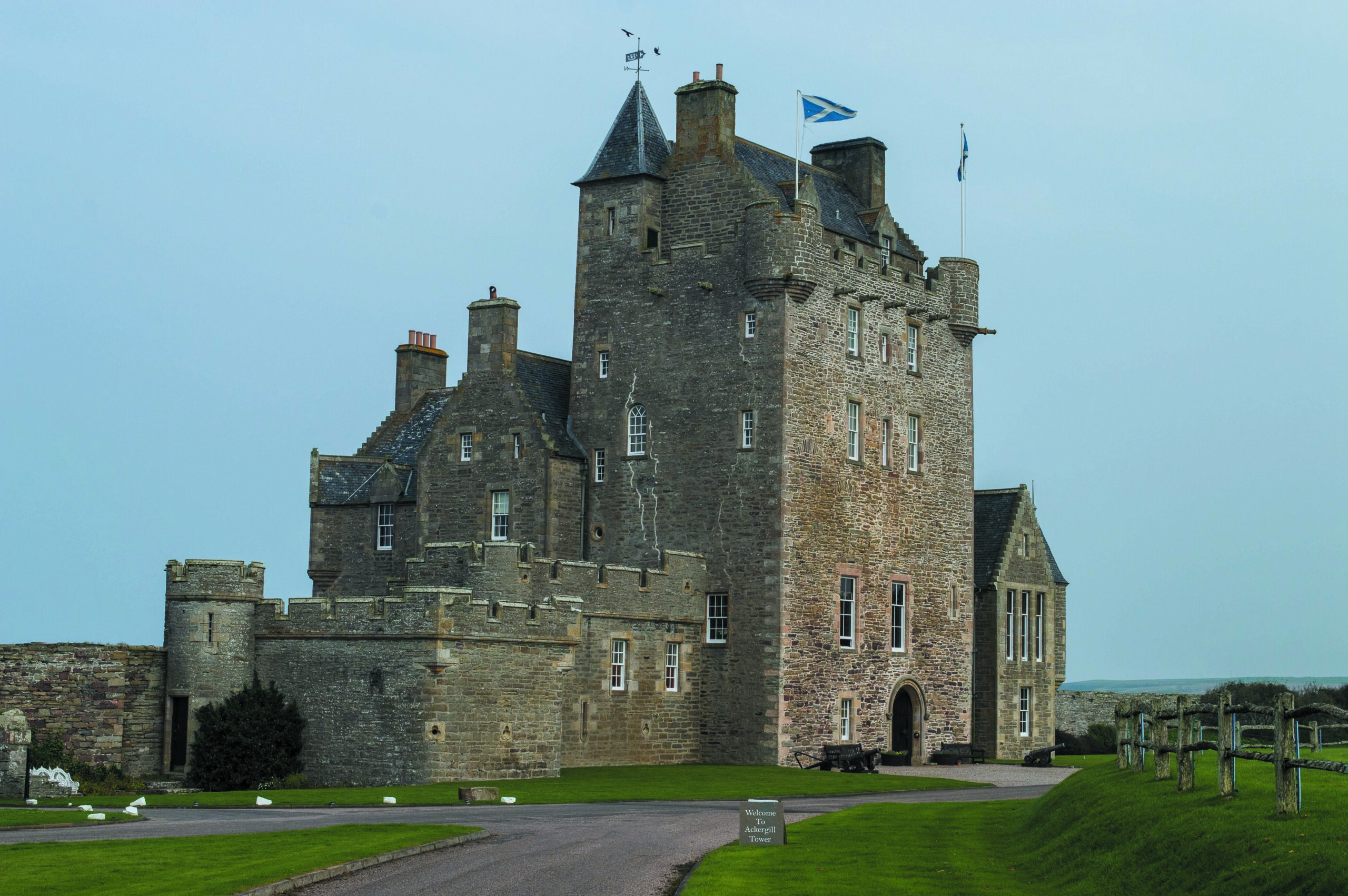Ackergill Tower

Ackergill Tower Details
Ackergill Tower, occupied C16 tower of the Keiths, Sinclairs & Dunbars extended to C19
- Closest To: Wick, Keiss
- Access: S.O.A.C. Public Access
- Grid Reference: ND353547
The core of Ackergill tower is a large and impressive rectangular tower-keep which is dated to c1500. Today it is surrounded by a number of extensions which are still dominated by the old tower. The location is not obviously defensive, being on low lying land towards the southern end of Sinclair’s Bay north of Wick. Indeed from the sea it must have been a highly visible feature – and that is perhaps the reason the tower was built here. A corresponding tower can be seen to the north of the bay, Keiss Castle, and the two may have been part of a design to dominate the bay architecturally.
The medieval history of Caithness involves the slow retreat of the Norse influence that had been dominant in the area for centuries in the face of an advance in the power of the Kings of Scots from the south. After 1230, a sequence of placeholding earls appointed by the Kings of Norway included members of the Strathearn dynasty, and during the first half of the 14th century affairs further south meant that Caithness history is rather mysterious. However, by the reign of Robert II, the Cheyne family had acquired a considerable proportion of the lands of Caithness, and had become one of the most powerful in the north of Scotland. The last of the Cheyne lords was Reginald who died in 1345, leaving his estate to be split between his two daughters, one of whom was married to Nicholas Sutherland, the other to John Keith, second son of the Earl Marischal. Ackergill was part of Mariota’s portion, and thus passed to the Keith family.
It was the Keiths who built the tower at Ackergill, perhaps in imitation or competition with their cousins at Dunnotar. This is first mentioned in 1537, but stylistically the tower is earlier than this. However this mention corresponds with the failure of the male line of the Keiths of Ackergill, and the estate was granted back to the Earl Marischal. Ackergill was then squabbled over by members of the Keith family and the increasingly volatile Sinclair Earls of Caithness, and then the Gordon Earls of Sutherland entered the fray, besieging the castle in 1623. The castle was not kept in good repair by the Sinclairs, and by the 1700s had been purchased by the Dunbars of Hempriggs, with whom the Sinclairs had many marriage alliances. The Dunbar family carried out many of the extensions and modernisations of the tower. Between 1986 and 2018, Ackergill was run as a venue and hotel, but was sold in 2018 and is now a private residence.
Become a supporter of my work to access a more detailed history